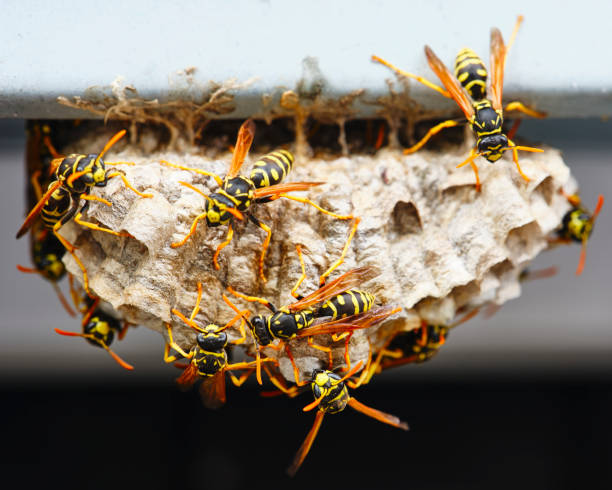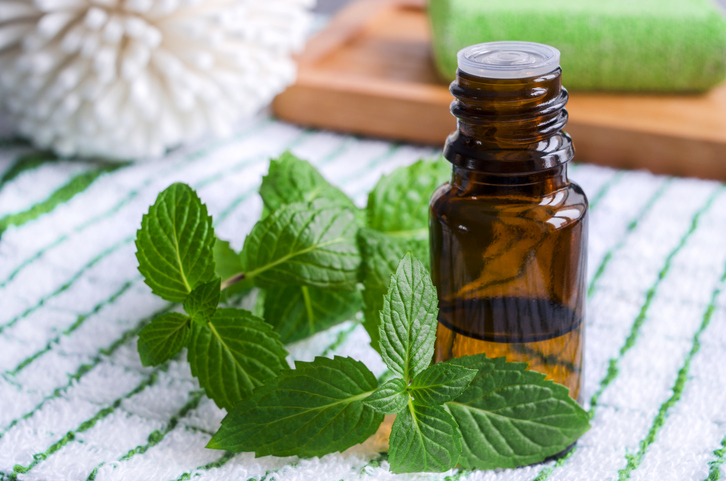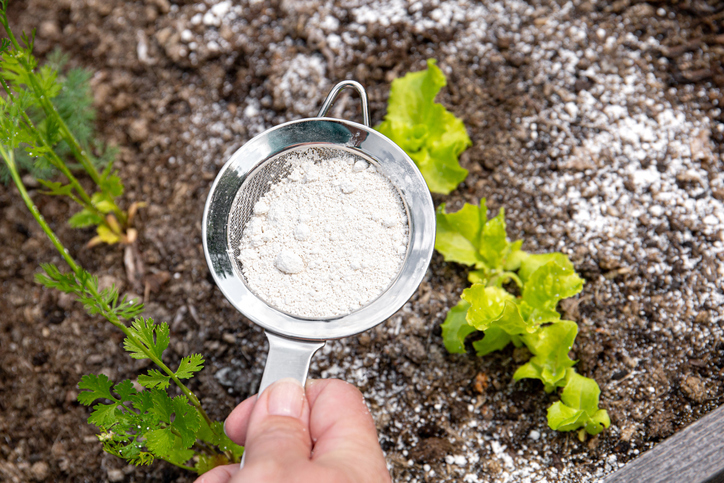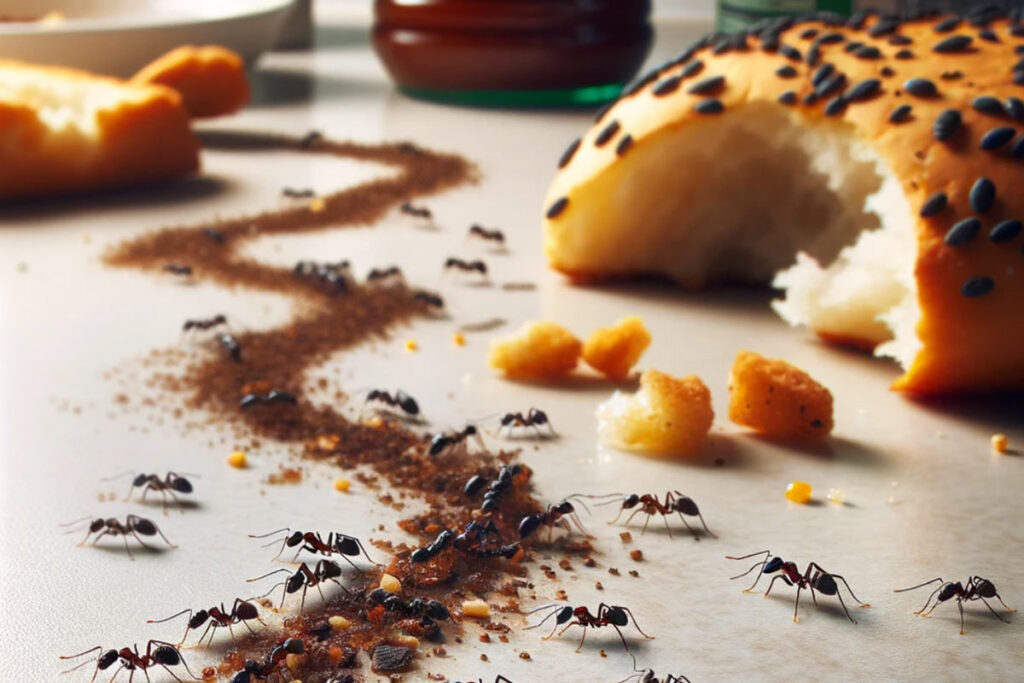Bees vs. Wasps vs. Hornets
Bees, wasps, and hornets are often confused but have distinct characteristics and roles in the ecosystem. Bees are crucial pollinators, generally non-aggressive unless threatened, and can sting only once. Wasps, identifiable by their slender bodies, are natural pest controllers but can be more aggressive than bees and are capable of multiple stings. Hornets, a type of wasp, are larger and can pose a significant threat with their painful stings, especially to those with allergies. Understanding these differences is key for homeowners to safely coexist with these important insects while minimizing risks to human health and home safety.

Understanding Our Buzzing Neighbors: Bees, Wasps, and Hornets
In the tranquil sanctuaries of our backyards and the secluded spaces of our homes, a world teeming with life hums quietly. Here, bees, wasps, and hornets, often subjects of fear and misunderstanding, carry out their vital roles in the tapestry of nature. These insects, while sometimes seen as nuisances or threats, are in fact integral to the ecological balance and biodiversity of our surroundings.
Bees, with their gentle buzz, are the tireless workers of the natural world, crucial for pollination and the flourishing of gardens and crops alike. Wasps, with their striking colors and sleek bodies, are not just architects of fascinating structures but also unsung heroes in controlling pest populations. Hornets, often perceived as the more formidable relatives in this insect family, play their part in maintaining the natural order.
Yet, for homeowners, the presence of these insects can stir a mix of awe and apprehension. The sight of a bee hive hanging from a tree branch or the discovery of a wasp nest under the eaves can prompt questions of safety and coexistence. How do we live alongside these creatures in harmony and safety? What measures should we take to protect our homes, our families, and these important members of the ecological community?
This article delves into the world of bees, wasps, and hornets, unraveling the myths and facts about these fascinating creatures. It aims to provide homeowners with a balanced perspective, blending technical information with practical advice. From understanding the behavior and importance of these insects to offering strategies for safe cohabitation, we explore the delicate balance between human habitation and the natural world.
As we navigate the challenges and responsibilities of homeownership, it’s crucial to remember that our actions have a broader impact on the environment. In learning about and respecting these buzzing neighbors, we not only ensure our safety but also contribute to the health and diversity of our local ecosystems. Let’s embark on this journey of understanding, equipped with knowledge and a sense of responsibility towards our shared environment.
Quick Identification Guide
Bees
- Appearance: Fuzzy, with rounded bodies.
- Behavior: Non-aggressive, stings only when threatened.
- Habitat: Prefer flowers and plants for nectar and pollen.
Wasps
- Appearance: Slender, smooth bodies with a narrow waist.
- Behavior: More aggressive, especially near nests.
- Habitat: Often build paper-like nests in sheltered areas.
Hornets
- Appearance: Larger than wasps, with a similar shape.
- Behavior: Can be very aggressive when provoked.
- Habitat: Prefer to build large nests in trees or shrubs.
The Essential Bee: Pillars of Our Ecosystem
Bees, often seen as the harbingers of spring and symbols of industriousness, hold a far more critical role in our ecosystem than many realize. These small, buzzing creatures are not just producers of honey; they are pivotal pollinators, essential to the health of both natural and agricultural landscapes.
Bees are among the most efficient pollinators on Earth. Their bodies are designed for pollination, with hairs that easily pick up pollen from flowers. As they move from bloom to bloom, they facilitate the reproduction of plants, a process vital for the survival of many crops. According to the Food and Agriculture Organization of the United Nations, nearly 90% of the world’s wild flowering plant species depend, at least in part, on animal pollination, with bees being a significant contributor.
The economic value of bees is staggering. In the United States alone, bees’ pollination work is valued at over $15 billion annually, contributing significantly to the country’s agricultural economy. Globally, this figure rises to an estimated $100 billion. The crops they pollinate range from fruits and nuts to vegetables, which are crucial for a balanced and nutritious diet.
Beyond pollination, bees produce honey, a natural sweetener with numerous health benefits. Honey has antibacterial properties and has been used in traditional medicines for centuries. The process of honey production also plays a role in the health of the environment. As bees collect nectar, they simultaneously pollinate plants, a dual role that underscores their importance.
Despite their importance, bees face numerous threats. Habitat loss, climate change, pesticides, and diseases have contributed to a decline in bee populations globally. This decline not only threatens the bees but also the agricultural systems that rely on them. The phenomenon of Colony Collapse Disorder (CCD), where worker bees abruptly disappear from a hive, has raised alarms about the health and sustainability of bee populations.
Recognizing the critical role of bees, conservation efforts are underway globally. These include promoting bee-friendly farming practices, reducing pesticide use, and encouraging the planting of native, pollinator-friendly plants in gardens. Urban beekeeping has also gained popularity as a way to support bee populations while educating the public about their importance.
Homeowners can play a significant role in supporting bees. Planting a variety of flowering plants that bloom at different times of the year provides a continuous food source for bees. Avoiding pesticides, creating natural habitat gardens, and even setting up a bee house can contribute to the health and proliferation of local bee populations.
The essential bee, often unnoticed, plays a monumental role in our ecosystem and agriculture. Their health and survival are intricately linked to ours. By understanding and supporting these vital pollinators, we not only ensure their survival but also the health of our planet and future food security.
Helping Our Pollinators
Supporting bees in your garden
- Plant a variety of flowers that bloom at different times.
- Avoid using pesticides in your garden.
- Provide a water source for bees.
Creating a bee-friendly environment
- Leave some areas of your garden wild.
- Consider installing a bee hotel.
- Participate in local conservation efforts.
Wasps: The Misunderstood Guardians
Wasps, often cast in a negative light due to their perceived aggressiveness, are in fact crucial players in our ecosystem. These slender, less hairy relatives of bees are more than just uninvited picnic guests; they are vital in maintaining the ecological balance.
Wasps are nature’s pest control agents. They feed on a variety of insects, including caterpillars, flies, and crickets, many of which are agricultural pests. This predatory behavior helps control these populations, reducing the need for chemical pesticides. A study published in the journal ‘Biological Control’ highlights the role of wasps in suppressing pest populations in crops, underscoring their importance in sustainable agriculture.
The wasp family is diverse, encompassing over 30,000 identified species. This diversity allows them to inhabit a wide range of environments, from urban gardens to dense forests. Their adaptability is remarkable, with some species evolving unique hunting and nesting behaviors. For instance, the paper wasp, known for its distinctive paper-like nests, has a complex social structure and communication system, showcasing the intricate nature of these insects.
Wasps often build nests in close proximity to human dwellings. These nests, while fascinating in structure, can be a source of conflict. Homeowners might find nests under eaves, in attics, or in garden sheds. While it’s natural to feel uneasy about these nests, it’s important to remember that wasps are generally not aggressive unless provoked. Disturbing a nest can trigger a defensive response, leading to stings.
For those with allergies, wasp stings can be more than just painful; they can be life-threatening. It’s crucial to exercise caution around wasp nests. Simple measures, like keeping windows and doors screened and food covered outdoors, can minimize interactions. If a nest poses a direct threat, it’s advisable to seek professional removal services. Attempting to remove a nest without proper knowledge and equipment can escalate the situation, leading to injuries.
Encouraging wasps to nest away from human activity is a practical approach. Planting gardens with a variety of flowers can attract wasps to feed on nectar, away from homes. Avoiding the use of pesticides not only protects wasps but also other beneficial insects. Creating a habitat that supports a diverse insect population can naturally regulate wasp numbers, reducing the likelihood of large nests near homes.
Wasps, despite their daunting reputation, are an integral part of our natural world. Their role in pest control and biodiversity is invaluable. Understanding and respecting their place in the ecosystem is key to coexisting peacefully. With mindful practices, we can appreciate the role of these misunderstood guardians and ensure a balanced and healthy environment.
-
Best OverallSave $50 on your first recurring service today with code GET50
-
Best for TermitesSave $50 on pest control services with code SAVE50 at checkout
-
Best for Bed BugsGet a free estimate on pest control services for your home
-
Best for Wildlife RemovalCall For A Fast & FREE Phone Estimate Today
-
Best for Natural TreatmentGet $100 Off Your Termite Treatment Service
Hornets: The Larger Threat
Hornets, a specific group within the wasp family, present a unique challenge in the delicate balance of human and insect coexistence. These insects, larger and often more intimidating than their bee and wasp relatives, have garnered a reputation that warrants both respect and understanding.
The Asian giant hornet, recently making headlines as the “murder hornet,” exemplifies the potential threat hornets pose. Originating from Asia, these hornets have been found in North America, causing alarm among entomologists and environmentalists. Their size, which can reach over two inches, isn’t their only daunting feature. These hornets are voracious predators of honeybees, capable of destroying entire hives in a matter of hours. This behavior not only threatens bee populations but also the broader agricultural systems reliant on bees for pollination.
While hornets generally do not seek out human interaction, their stings can be particularly painful and dangerous. The venom of the Asian giant hornet, for instance, contains a potent neurotoxin. For individuals with allergies, a sting can be life-threatening, necessitating immediate medical attention. Even for those without allergies, multiple stings can lead to severe health complications.
Hornets typically build their nests in secluded areas, often in tall trees, but they can also be found in sheltered parts of buildings. This propensity to nest near human habitation can lead to increased encounters, especially in the late summer and early fall when hornets become more aggressive. Homeowners discovering a hornet’s nest on their property are advised to exercise extreme caution. Due to the risks involved, professional removal is often the safest course of action.
Despite their fearsome reputation, hornets play a role in the ecosystem. They are predators of many insects, contributing to the natural pest control. This predatory behavior, while detrimental to bees, is part of the complex food web in nature. Understanding this ecological role is crucial in shaping our response to hornets. While caution and safety are paramount, indiscriminate killing, especially using pesticides, can have unintended environmental consequences.
Education and preparedness are key in dealing with the threat posed by hornets. Communities, particularly in areas where the Asian giant hornet has been sighted, benefit from awareness campaigns about identification, safety measures, and whom to contact for nest removal. Research and monitoring efforts are also vital in tracking the spread of these invasive hornets and implementing strategies to protect local ecosystems.
Hornets, particularly species like the Asian giant hornet, represent a significant concern in terms of human safety and environmental impact. Balancing caution with understanding their ecological role is essential. As we navigate this challenge, the focus should be on informed coexistence, ensuring both human safety and the health of our ecosystems.
“Murder Hornets” At a Glance
Asian giant hornets
- Known for attacking honeybee hives.
- Can decimate bee populations, impacting pollination.
- If spotted, report sightings to local wildlife authorities.
Protecting local bee populations
- Support local beekeeping initiatives.
- Educate yourself and others about these invasive species.
- Participate in community efforts to track and control their spread.
Coexisting with Caution: A Balanced Approach
Living harmoniously with bees, wasps, and hornets requires a blend of awareness, prevention, and safe intervention. Homeowners can adopt several strategies to minimize risks while respecting these insects’ ecological roles.

The first step in coexistence is prevention. Regularly inspecting homes for potential nesting sites, such as eaves, attics, and garden sheds, can help detect issues early. Sealing cracks and crevices in walls and foundations reduces access points. Additionally, covering food during outdoor activities and properly sealing garbage bins can significantly decrease the attraction for these insects.
Thoughtful landscaping plays a crucial role. Choosing plants that are less attractive to wasps and hornets, while still supporting bees, can create a balanced garden ecosystem. For instance, flowering plants like lavender and marigold are bee-friendly but less appealing to wasps.
If a nest is discovered, the approach depends on its size and location. Small, newly formed nests might be safely removed by homeowners using protective clothing and following safety guidelines. However, for larger or inaccessible nests, especially those of aggressive species like hornets, professional removal is strongly advised. Pest control experts can safely and effectively handle these situations, reducing the risk of stings or attacks.
Educating family members, especially children, about the importance and behavior of these insects is crucial. Understanding that bees are generally harmless unless provoked, and that wasps and hornets can be more aggressive, helps in managing reactions during encounters. Teaching respectful observation from a distance can foster a sense of coexistence.
Despite precautions, stings can occur. Having a first-aid kit readily available and knowing basic first-aid for insect stings can be lifesaving, particularly for those with allergies. In cases of severe reactions, seeking immediate medical attention is imperative.
By implementing these measures, homeowners can effectively reduce risks associated with bees, wasps, and hornets, while contributing positively to their local ecosystem. Coexistence is not just about managing risks, but also about understanding and respecting the vital roles these insects play in our world
Safety Tips for Homeowners
The Bigger Picture: A Delicate Balance
The interplay between humans, bees, wasps, and hornets extends beyond our backyards, touching on broader environmental and ecological issues. The decline in bee populations, a concern for scientists and environmentalists globally, underscores the need for a more harmonious relationship with these insects.
Bees, particularly honeybees, are facing challenges like habitat loss, climate change, and the widespread use of pesticides. According to a report by the Intergovernmental Science-Policy Platform on Biodiversity and Ecosystem Services, pollinators are crucial for 75% of the world’s food crops. The decline in their populations poses a direct threat to global food security.
Homeowners can play a pivotal role in supporting bee populations. Simple actions, such as planting native, pollinator-friendly plants or creating a small bee garden, can provide vital resources for bees. Reducing pesticide use, especially during blooming periods, can also mitigate harm to these essential pollinators.
Wasps and hornets, despite their less favorable reputation, also contribute to ecological balance. They are natural predators to many pests that harm crops and gardens. Understanding their role can shift the perspective from fear to appreciation, guiding more informed decisions about when and how to intervene with their habitats.
The emergence of invasive species like the Asian giant hornet presents new challenges. These invaders not only pose a risk to human safety but also disrupt local ecosystems. Monitoring and controlling their spread is crucial, a task that requires collaboration between homeowners, scientists, and wildlife experts.
Our approach to bees, wasps, and hornets should be informed by an understanding of their ecological roles and the challenges they face. By adopting practices that support their survival and ecological functions, we contribute to a healthier, more balanced ecosystem, which ultimately benefits us all.
In the intricate tapestry of our ecosystem, bees, wasps, and hornets each weave their own essential threads. Understanding these creatures is not just a matter of home safety, but of ecological responsibility. As homeowners, our interactions with these insects should be guided by knowledge and a sense of stewardship.
Bees, often seen buzzing around flowers, are more than just garden visitors; they are pivotal pollinators whose work underpins the health of our natural world and food systems. Protecting them aligns with broader environmental goals, such as biodiversity preservation and sustainable agriculture.
Wasps, despite their fearsome reputation, are nature’s pest controllers, playing a critical role in maintaining the balance of insect populations. Their presence, while sometimes inconvenient, reminds us of the dynamic and interconnected nature of ecosystems.
Hornets, particularly the larger varieties, command respect and caution. Their impact, both as predators in the insect world and as potential threats to human safety, highlights the delicate balance we must maintain in our interactions with wildlife.
As we navigate the challenges of living alongside these creatures, it’s crucial to remember that our actions have far-reaching implications. Simple steps, like choosing eco-friendly pest control methods or creating habitats that support these insects, can contribute to a healthier, more balanced ecosystem.
Our relationship with bees, wasps, and hornets is a microcosm of our broader relationship with nature. It calls for respect, understanding, and a commitment to coexistence. By embracing these principles, we not only ensure our safety but also contribute to the well-being of our planet.
Comparing Bees, Wasps, and Hornets
| Feature | Bees | Wasps | Hornets |
|---|---|---|---|
| Appearance | Fuzzy, with a rounder body | Slender, smooth, and shiny | Larger than wasps, robust |
| Temperament | Generally docile unless provoked | More aggressive, especially near nests | Aggressive when threatened, especially near nests |
| Sting | Sting once and then die | Can sting multiple times | Can sting multiple times, more painful |
| Role in Ecosystem | Pollination, crucial for many plants and crops | Pest control, preying on other insects | Predators to insects, including bees |
| Nesting Habits | In hives, often in trees or cavities | In nests made of paper-like material, often in eaves or underground | Similar to wasps, but nests are usually larger |
| Allergy Risk | Stings can cause allergic reactions | Stings can cause severe allergic reactions | Stings can be more dangerous due to venom potency |
| Conservation Status | Many species declining, need protection | Generally stable, some species beneficial for controlling pests | Some species are invasive and pose threats to local ecosystems |
| Homeowner Tips | Avoid disturbing hives, call professionals for removal | Remove attractants, seek professional help for nest removal | Exercise extreme caution, professional removal recommended |
FAQs: Bees, Wasps, and Hornets
How can I differentiate between bees, wasps, and hornets?
Bees are generally more robust and hairy, aiding in pollination. Wasps have a slender body, a narrow waist, and are less hairy. Hornets, a type of wasp, are larger and can be more aggressive.
Are bees or wasps more likely to sting?
Wasps are generally more aggressive and more likely to sting. Bees usually sting only when provoked or threatened, as they die after stinging.
What should I do if I find a bee, wasp, or hornet nest near my home?
For bee nests, consider contacting a local beekeeper for safe removal. For wasp or hornet nests, especially if large or in difficult-to-reach areas, it’s safer to call professional pest control services.
Why are bees important to the environment?
Bees are crucial pollinators, playing a key role in the growth of many fruits, vegetables, and nuts. They are essential for the health of ecosystems and agricultural productivity.
How can I prevent wasps and hornets from nesting near my home?
Keep food and garbage sealed, manage compost properly, and seal cracks and crevices in buildings. Avoid leaving sweet drinks and food outdoors.
Are hornet stings more dangerous than bee or wasp stings?
Hornet stings can be more painful due to their larger size and the chemicals in their venom. They can be particularly dangerous to individuals with allergies.
Can bees, wasps, and hornets be beneficial to my garden?
Yes, bees are excellent pollinators, while wasps can control pest populations by feeding on insects that harm plants.
What is the best way to treat a sting from a bee, wasp, or hornet?
Remove any stinger if present, clean the area with soap and water, apply a cold pack to reduce swelling, and take an antihistamine for itching. Seek medical attention if there are signs of an allergic reaction.
How can I support bee populations in my area?
Plant a variety of flowering plants, especially native ones, reduce pesticide use, and provide sources of water in your garden.
What is the difference between a “murder hornet” and other hornets?
The “murder hornet” is a nickname for the Asian giant hornet, which is larger and can be more destructive, particularly to honeybee populations, compared to other hornet species.









